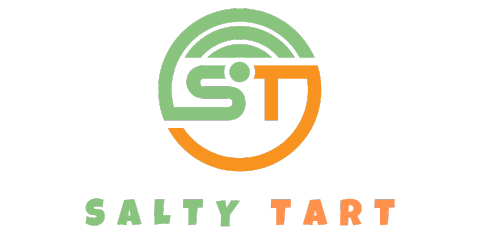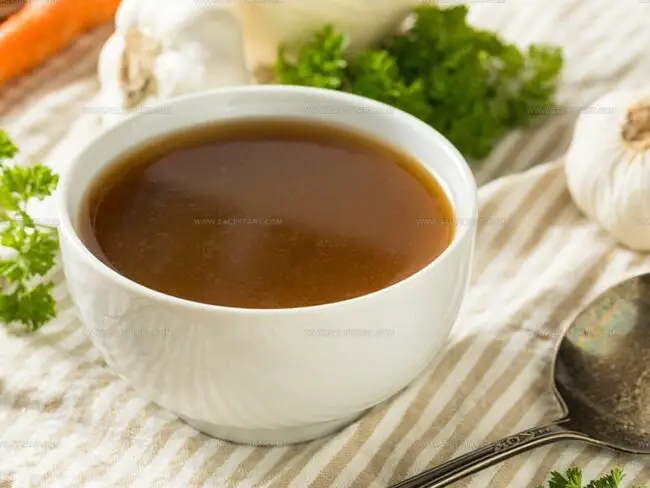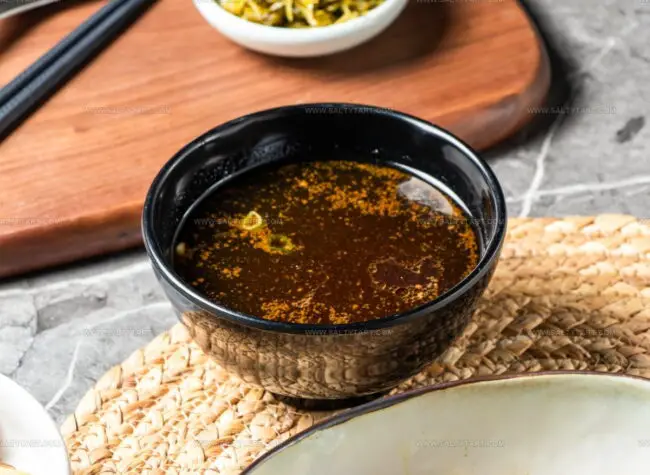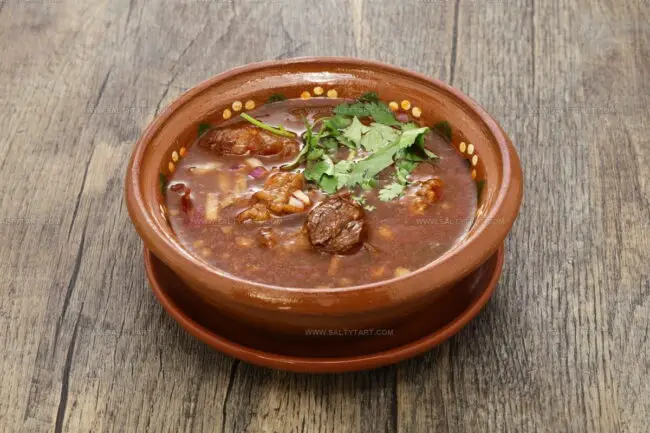Beef Consommé or Beef Broth: What’s the Real Difference
Beef consomme and beef broth might seem similar at first glance, yet each brings its own character to culinary creations.
This flavorful duo serves as the foundation for countless soups, stews, and sauces across global cuisines.
The rich amber color of consomme often catches the eye before its deep taste captivates the palate.
Many home cooks reach for broth as their go-to option because of its versatility and accessibility in most grocery stores.
Professional chefs, however, may prefer consomme for its refined clarity and concentrated flavor profile.
Both liquids add that unmistakable savory quality known as umami to any dish they touch.
If you enjoy making soups from scratch, understanding these beef-based liquids will elevate your cooking significantly.
The following sections break down exactly what sets these two kitchen staples apart in preparation, taste, and best uses.
Beef Broth: What Is It?
Beef broth, sometimes called bouillon, is a flavorful, savory liquid made by simmering beef bones, meat, vegetables, herbs, and seasonings for one to two hours.
Common vegetables added include onions, carrots, celery, and parsley, which not only enhance taste but also boost the broth’s nutritional value.
Salt and spices can be adjusted to suit your preference.
Beef broth is usually clear, thinner, and less concentrated compared to beef stock or concentrated broths.
It can be a perfect warm starter or as a base for soups, stews, and sauces.
There are variations like condensed beef broth, which is richer and thicker due to longer cooking and reduced water content.
How To Make Beef Broth?
Beef broth is made by simmering beef, often tougher cuts like shank, in water to extract nutrients and flavor. While beef is the main ingredient, adding parsley, onions, peppers, and celery can enhance the taste.
It’s important to cook the broth at low heat and avoid boiling to prevent cloudiness. During simmering, skim off any fat that rises to the surface. Cooking can take anywhere from 3 to 24 hours.
Low heat helps preserve the broth’s flavor, which is why many people buy ready-made broth for convenience. Remember, homemade broth usually has a shorter shelf life compared to store-bought versions.
What Is Beef Consomme?
Beef consomme stands as a perfect, complete version of beef broth with intense flavor and minimal impurities. Many food lovers consider it one of the finest beef soups due to its concentrated nature.
Several variations exist, sometimes enhanced with carrots or onions for extra flavor depth. Interestingly, Serbian people adore consomme despite it not being part of their traditional cuisine.
This clear amber liquid results from simmering cloudy broth until purified, making it a culinary favorite. For proper preparation, egg whites and minced meat must be added to the liquid, giving the consomme its signature richness and thickness.
Making beef consomme involves specific techniques and delicate procedures that transform cloudy broth into beautiful translucent liquid. During cooking, egg whites rise to the surface, allowing the broth beneath to clarify into the elegant soup many chefs prize for its refined taste.
How To Cook Beef Consomme?
Rich beef consomme brings together ground beef, tomatoes, egg whites, stock, and seasonings in a flavorful blend. The clarification takes several hours but delivers amazing results worth waiting for.
Starting off, you need to separate egg whites from yolks and whisk them until they form stiff peaks using an electric mixer or your hands.
Then, you combine your minced vegetables and ground beef with the whisked egg whites, then add this mixture to your broth along with bay leaf, black pepper or other seasonings. Low heat simmering for several hours while stirring regularly helps achieve that perfect clarity.
Finally, strain everything through a cheesecloth or muslin to remove imp
What Are Similarities Between Beef Consomme and Beef Broth?
Beef consomme and beef broth have some common things, such as:
Beef Consomme vs Beef Broth: The Differences
Beef consomme and beef broth have five key differences showed in the table below.
| Feature | Beef Broth | Beef Consomme |
| Preparation Time | Simmered for a few hours | Takes longer; requires hours of simmering and clarification |
| Ingredients | Primarily beef; optional vegetables like parsley, celery, onions, peppers | Requires more ingredients including ground beef, egg whites, vegetables for clarification |
| Appearance | Clear brownish liquid | Deep dark amber, crystal-clear and purified |
| Consistency | Thinner, lighter broth | Thicker, more concentrated “double broth” |
| Flavor | Milder, less intense | Richer, more concentrated flavor |
| Uses | Base for soups, gravies, cooking ingredient | Served alone as an appetizer or used in sauces and stews; requires skill to prepare |
Preparation Time
Beef broth is relatively quick to make, typically simmered for several hours to extract flavor from beef and optional vegetables.
In contrast, beef consomme demands a longer process. It requires slow simmering over several hours combined with a clarification step using egg whites to remove impurities, resulting in a crystal-clear liquid. This extra step makes consomme more time-consuming and labor-intensive.
Ingredients and Appearance
Beef broth’s base is simple, usually just beef bones or meat with water. Vegetables such as onions, celery, carrots, and herbs may be added to enhance flavor, but they’re optional. Hence, beef broth has a light brown, somewhat translucent appearance, often cloudy due to suspended particles and fats.
Beef consomme, however, requires a more complex mix including ground beef, egg whites, and finely chopped vegetables. The egg whites act as a natural filter during cooking, trapping solids and clarifying the broth.
That's why beef consomme stands out visually with its deep amber color and remarkable clarity - virtually transparent.
Consistency
Beef consomme stands out as a concentrated, thicker version of regular beef broth. This rich liquid adds depth to stews and sauces in ways that regular broth simply can't match.
The purification process makes beef consomme clearer and more robust, perfect for recipes where you want that deep, meaty taste without watering down other ingredients.
Most chefs reach for consomme when their dishes need that extra punch of flavor that only comes from this specially prepared liquid.
Flavors
Broth offers a mild, balanced beef flavor, perfect for complementing other ingredients in dishes without overpowering them.
Consomme delivers a deeper, more intense beef taste, pure and rich, because of its concentration and clarified nature. This makes it a gourmet choice often enjoyed on its own or in refined recipes.
Different Uses
Beef broth is versatile and commonly used as a foundation for soups, gravies, and braised dishes. It adds subtle depth without dominating the final dish.
Consomme is prized for its clarity and strength of flavor, often served as a clear soup appetizer or used in haute cuisine to elevate sauces and elegant dishes. Due to the skill required in preparation, consomme is generally reserved for special occasions or refined menus.
Shelf Life of Beef Consomme And Broth and How to Store It
Beef broth and consomme's their shelf lives differ slightly due to their preparation and concentration.
| Type | In The Refrigerator | In The Freezer |
| Beef Broth | 3 to 4 days | 3 to 6 months |
| Beef Consomme | 4 to 5 days | Up to 3 months |
Storage Tips
Can Beef Consomme Replace Beef Broth and Vice Versa?
Beef consomme and beef broth can sometimes be used interchangeably, but they’re not perfect substitutes due to differences in flavor, texture, and concentration.
If you substitute consomme for broth, expect a more intense flavor and richer texture, so you might want to dilute it or use less to avoid overpowering your dish.
Conversely, using broth instead of consomme will result in a lighter taste and thinner texture, which may work fine for soups but may lack the depth needed for dishes relying on consomme’s richness.
| Substitute | Ratio |
| Consomme for Broth | Use 1 part consomme to 2 parts water or broth |
| Broth for Consomme | Use 2 parts broth to 1 part consomme |
Health Benefits Of Beef Consomme and Beef Broth
Beef consommé and beef broth both offer valuable health benefits, providing a rich source of protein, collagen, and essential minerals like calcium, magnesium, and potassium that support bone health, joint function, and muscle repair.
Their slow-cooked nature helps extract nutrients from bones and connective tissues, making them nourishing and easy to digest.
Additionally, both can aid gut health by supporting the gut lining and reducing inflammation.
While consommé is more concentrated and nutrient-dense due to its clarification process, broth offers a lighter option rich in hydration and electrolytes.
Got Questions? We’ve Got Solutions
1. Can I substitute beef broth for beef consommé in recipes?
Yes, you can substitute beef broth, but your dish will be less rich and clear. Add extra seasonings or reduce the broth to intensify the flavor and get closer to consommé's depth.
2. Why is beef consommé more expensive than beef broth?
Beef consommé requires additional processing with egg whites and longer cooking time to achieve its clarity and concentrated flavor, making it more labor-intensive and costly to produce.
3. Does beef consommé have more calories than beef broth?
Yes, beef consommé typically contains more calories per serving because it's more concentrated. However, both are relatively low-calorie liquids compared to most foods.
4. How long do opened beef consommé and beef broth last in the refrigerator?
Both should be used within 3-4 days after opening when stored in the refrigerator. For longer storage, freeze them in airtight containers or ice cube trays for up to 3 months.








Mike Reynolds
Founder & Recipe Developer
Expertise
Farm-to-table cuisine, Seasonal recipe development, Sustainable cooking techniques, Food photography
Education
Asheville-Buncombe Technical Community College (A-B Tech)
Associate Degree in Culinary Arts
Mike studied culinary arts with a strong focus on farm-to-table principles and sustainable cooking. His training emphasized the importance of fresh, local ingredients and environmentally responsible practices in the kitchen.
Mike’s food journey began deep in the Blue Ridge Mountains, where weekends at farmers’ markets and home-cooked meals sparked a lifelong obsession with simple, seasonal eating.
After earning his Associate Degree in Culinary Arts from Asheville-Buncombe Technical Community College, he set out to bring farm-to-table cooking into everyday kitchens, without the fuss.
Mike’s philosophy is all about keeping it fresh, unfussy, and full of heart. When he’s not crafting new single-serving recipes, he’s hiking mountain trails, chatting with local farmers, or experimenting with wild ingredients in his backyard kitchen.